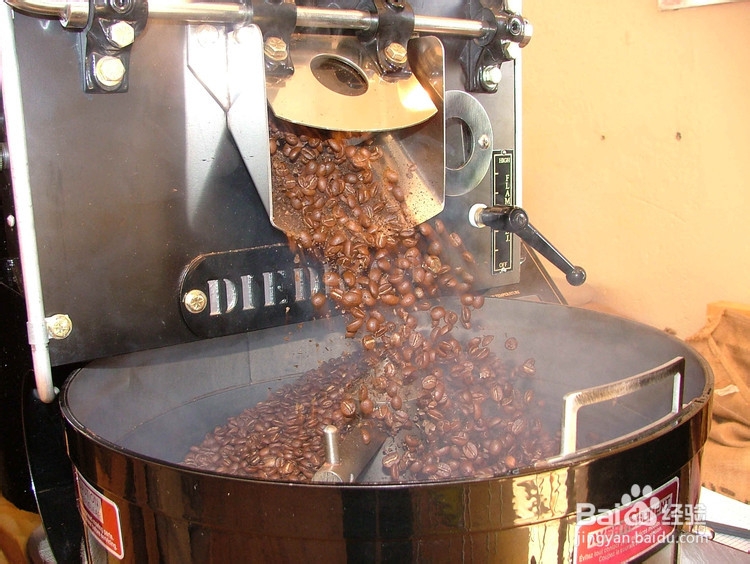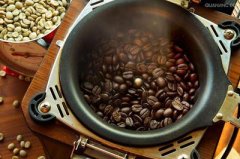Coffee teaches you eight ways to bake coffee beans.
Different roasting methods, different roasting degrees, the taste of coffee is not the same, different coffee, roasting methods are not the same. Therefore, the way of roasting is very important and exquisite for coffee.

The eight stages of roasting: the roasting methods of professional coffee are usually divided into the following eight ways.
1. Very shallow baking (LIGHT Roast): the degree of baking; very shallow baking, also known as shallow baking. The lightest roasting degree of all roasting stages, the surface of the coffee beans is a light cinnamon color, its taste and aroma are insufficient, this state is almost undrinkable. It is generally used for testing and seldom for tasting.
2. Shallow baking (CINNAMON Roast): baking degree; shallow baking, also known as cinnamon baking. The general baking degree, showing cinnamon color on the appearance, the smell of green has been removed, the aroma is OK, and the acidity is strong, which is a common roasting degree of American coffee.
3. MEDIUM Roast: degree of baking; moderate baking, also known as micro-baking. Medium baking heat and light baking are both American, in addition to sour taste, bitterness also appears, the taste is good. It has moderate aroma, acidity and mellowness, and is often used in the baking of mixed coffee.
4. Medium baking (HIGH Roast): baking degree; moderate micro-deep baking, also known as concentration baking. Belongs to the moderate micro-deep baking, the baking degree is slightly stronger than the slight medium baking, the surface has appeared a little thick brown, the bitterness also becomes stronger. Coffee tastes sour and bitter, with good aroma and flavor, and is most often loved by people in Japan and Central Europe. (blue Mountain Coffee)
5. Medium-deep baking (CITY Roast): baking degree; medium-deep baking, also known as urban baking. The most standard degree of roasting, bitterness and acidity are balanced and are often used in French coffee. (Brazil, Colombia)
6. Deep baking (FULL-CITY Roast): baking degree; micro-depth baking, also known as deep city baking. The baking degree is slightly stronger than the medium depth, the color becomes quite dark, and the bitter taste is stronger than the sour taste. It belongs to the Central and South American baking method, which is very suitable for preparing all kinds of iced coffee.
7. Deep baking (French Roast): degree of baking; deep baking, also known as French baking. Also known as French or European baking, belongs to deep baking, the color is thick brown with black, sour taste can not be felt, especially in Europe, France is the most popular, because the fat has infiltrated to the surface, with a unique flavor, very suitable for coffee Oulei, Viennese coffee.
8. Deep baking (Italian Roast): the degree of baking; very deep baking, also known as Italian baking. Also known as Italian baking, baking degree before carbonization, there is a scorched taste, mainly popular in Latin countries, suitable for fast coffee and cappuccino. Most of them are used in Espresso coffee series.
Important Notice :
前街咖啡 FrontStreet Coffee has moved to new addredd:
FrontStreet Coffee Address: 315,Donghua East Road,GuangZhou
Tel:020 38364473
- Prev

Is iced American coffee Zhai coffee? Introduction to the taste, taste and efficacy of black coffee
Caffeine Cafe healthy life caffeine is actually called single coffee. Basically, freshly ground coffee is roasted accurately, freshly ground and extracted by baristas.
- Next

Roasting technology of coffee beans Coffee industry as a standard for roasting degree
Coffee roasting degree was originally named according to the roasting degree preferred by various countries, but due to the standard being too general, different roasters have different opinions on roasting degree. The American Coffee Association (SCAA) uses infrared caramelization detector technology (Agtron) to measure the color of coffee beans to determine the roasting degree of coffee, and the color is made into eight standard color blocks from light to dark.
Related
- Beginners will see the "Coffee pull flower" guide!
- What is the difference between ice blog purified milk and ordinary milk coffee?
- Why is the Philippines the largest producer of crops in Liberia?
- For coffee extraction, should the fine powder be retained?
- How does extracted espresso fill pressed powder? How much strength does it take to press the powder?
- How to make jasmine cold extract coffee? Is the jasmine + latte good?
- Will this little toy really make the coffee taste better? How does Lily Drip affect coffee extraction?
- Will the action of slapping the filter cup also affect coffee extraction?
- What's the difference between powder-to-water ratio and powder-to-liquid ratio?
- What is the Ethiopian local species? What does it have to do with Heirloom native species?

